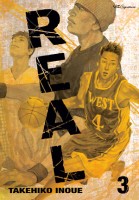 Creator: Hiroaki Samura
Creator: Hiroaki Samura
U.S. publisher: Dark Horse
ISBN: 9781616553371
Released: May 2014
Original release: 2011
Awards: Eisner Award, Japan Media Arts Award
Beyond Good and Evil is the twenty-ninth volume in the English-language release of Hiroaki Samura’s award-winning manga Blade of the Immortal. Published by Dark Horse in 2014, Beyond Good and Evil is equivalent to the twenty-eighth volume of the Japanese edition of Blade of the Immortal released in 2011. Blade of the Immortal is a long-running series. The collected volumes of the manga first began to be released in Japan in 1994 while the first collection in English was published in 1997. Personally, I discovered Blade of the Immortal in 2007 and have been reading it ever since. The series is now in its final volumes and is drawing closer and closer to its conclusion. Since I’m fond of Blade of the Immortal, I’m both excited and saddened to see it end. Beyond Good and Evil is the beginning of the series’ last battle as all of the surviving characters are brought together to face one another and to confront their destinies.
The members of the Ittō-ryū who were escaping Edō by way of the Mito road have been annihilated. They put up a magnificent fight against Habaki Kagimura’s Rokki-dan and there were casualties on both sides, but in the end it was the Ittō-ryū that was brought closest to its demise. A very small group of the Ittō-ryū’s most elite warriors, including its leader Anotsu Kagehisa, still remain and are on the run. They stayed behind in Edō long enough to wreak havoc at the city’s castle before fleeing, hoping to reunite with the rest of the Ittō-ryū at the port of Hitachi before sailing for Satsuma. But with their companions dead, a few unexpected allies, and no small number of enemies, Anotsu’s carefully laid plans will have to change. As for Habaki, who has very little left to lose, he is willing to do anything that it takes and to commit any atrocity necessary in order to ensure that Anotsu and the remaining Ittō-ryū members, as well as anyone who might lend them their aid, are completely wiped out.
One of the things that has always impressed me about Blade of the Immortal is its complex, morally grey characters. The protagonists and antagonists of the series are constantly shifting, making it difficult to strictly categorize them as being good or bad guys; they are simply extremely flawed people. The confrontation between Habaki and Anotsu and the rest of the survivors has been building over the last few volumes. They all finally meet again, likely for the last time, in Beyond Good and Evil. It’s an aptly named volume. None of the characters are entirely in the right and they are all guilty of countless deaths. There is no turning back for them and they must see their chosen paths through to the end, even knowing that there is a strong possibility that they will fail or have failed already. Anotsu, Habaki, and the others may or may not survive, but even if they do, survival does not necessarily mean victory.
With the final battle of Blade of the Immortal approaching, one might expect it to be a heroic showdown of epic proportions, except for the fact that there aren’t really any heroes in the manga. Instead, the atmosphere surrounding the characters and their confrontation is one of inevitability and futility. There will be a battle and because those who have managed to survive for this long are the most skilled fighters it will be intense. However, very little will be accomplished by the skirmish except for perhaps mutual destruction. The Ittō-ryū barely exists anymore and it is very unlikely that Anotsu’s hopes and dreams of restoring the way of the sword to Japan will come to fruition. For Habaki, destroying the Ittō-ryū won’t allow him to regain his lost honor or to erase his heinous deeds. At one point both men were fighting to change Japan and to right the wrongs that they saw in their society, but their ideals and ambitions may come to nothing in the end.




